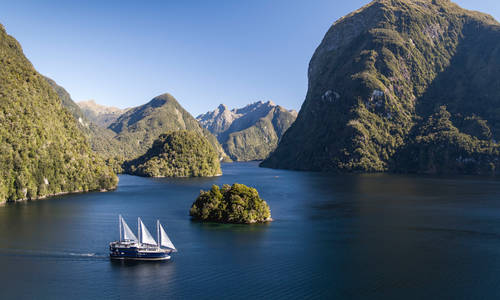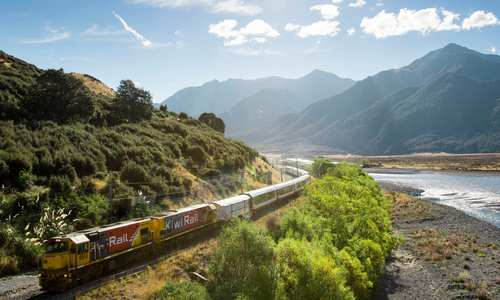Introduction
Extreme climate and extreme geography are the hallmarks of the west coast of New Zealand, a narrow strip of land hemmed in by the Tasman Sea and the Southern Alps. It's a region of lofty mountains and mighty glaciers, which, over aeons, have sculpted the land into dramatic formations, creating a wild and beautiful landscape that provides the backdrop to some truly epic experiences.
Discover the Franz Josef & Fox Glaciers
These enormous glaciers form the centrepiece of the Westland National Park and are two fo the west coast's biggest crowd-pullers. Indeed, they are among the finest examples of glaciology in the world. When the clouds are heavy, the landscape can seem sullen, moody even, but when the sun shines the ice sparkles and guided walks and scenic flights take in their dazzling beauty.
Franz Josef is the larger of the two, but Fox is no less dramatic, though the village at its base has fewer hotels and restaurants than its sibling. You'll need a guide to walk or climb either glacier, but it's a truly memorable experience to strap on some crampons and make your way through across vast crevasses and through arches of blue ice.

Franz Josef Glacier
Take the Tranz-Alpine Express to Greymouth & Arthur's Pass
Greymouth is the west coast's largest town and was an important port during the gold rush and mining boom. Today, old photos and memorabilia in the History House Museum reveal the region's mining and nautical past, while Shantytown – a recreation of an 19th-century mining settlement – offer visitors the chance to learn about prospecting and try gold panning for themselves.
Greymouth also marks one end of the TranzAlpine railway and the Great Alpine Highway, both of which connect Christchurch to the west coast. No matter which mode of transport you opt for, you'll be treated to some of New Zealand's most dramatic scenery, the best of which can be found at the 920-metre-high Arthur's Pass.

Tranz-Alpine train to Greymouth
Experience the beauty of Lake Tekapo
Tekapo is Maori for 'night sleeping place', and the night sky here is one of the most spectacular in New Zealand, due in no small part to the remoteness and lack of artificial light. On clear night, huge numbers of stars can be seen with the naked eye, but a stargazing evening at Mount John Observatory is an even more magical experience. In the daytime, things are just as impressive, with the lake's turquoise waters reflecting the snow-clad peaks of the Southern Alps and the iconic Church of the Good Shepherd – one of the most photographed spots in New Zealand.

Church of the Good Shepherd, Lake Tekapo
Go hiking in Mount Cook National Park
New Zealand's tallest peak forms the centrepiece of Mount Cook National Park in the South Island's mountainous central region. The 3,754-metre peak was the training ground for Everest pioneer Sir Edmund Hillary before his successful climb of the world's highest mountain in 1953. Today, it provides a stunning backdrop to a host of walking trails, while scenic flights and, in the winter, heli-skiing are also popular options.

Mount Cook National Park












